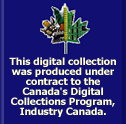|

The most abundant seal on Sable island is the Gray Seal
which has increased at some 13% per cent over the past years.
Research on
Sable Island has been carried out to access the foraging
habits of Gray Seal using satellite-linked radio tags, small
underwater videocams attached to seals, blubber samples
to identify diet sources, and other modern techniques. Gray
Seals also carry adults of Sealworms, the younger stages
of which occur in groundfishes, especially Cod. Successful
research has been carried out on Sable Island to develop
antiferility vaccines that is injected into females during
the breeding season.
 The
Harbour Seal is much scarcer on the Island coinciding with
the great increase of Gray Seals. The Harbour Seal has been
subjected to great losses from shark predations in recent
years. The
Harbour Seal is much scarcer on the Island coinciding with
the great increase of Gray Seals. The Harbour Seal has been
subjected to great losses from shark predations in recent
years.
Other more
northern seals have become common during the winter and
spring on the Island’s beaches, especially Harp Seals and
to a lesser extent Hooded Seals from the ice fields off
Newfoundland. A few of the arctic Ringed Seals have also
occurred. The island once held large herds of Walruses that
were exterpiated soon after the arrival of Europeans. Only
the occasional skull or other bone, is exposed by storms.
|









